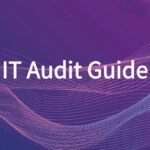IT Due Diligence is the process of thoroughly evaluating the information technology (IT) infrastructure, systems, processes, and risks of a company—typically as part of a merger, acquisition, investment, or partnership. It involves assessing the technology landscape to uncover potential risks, costs, integration challenges, and opportunities for value creation.
🔍 Why You Should Conduct IT Due Diligence:
1. Risk Identification
- Detect outdated, unsupported, or vulnerable systems.
- Uncover cybersecurity risks or compliance issues (e.g., GDPR, HIPAA).
- Evaluate disaster recovery and business continuity plans.
2. Cost and Investment Planning
- Estimate future IT investments needed (e.g., system upgrades, staffing).
- Understand current IT operating costs and liabilities (e.g., licenses, contracts).
3. Operational Compatibility
- Assess how well IT systems can integrate with those of the acquiring company.
- Identify gaps or overlaps in software, infrastructure, and processes.
4. Scalability and Performance
- Determine whether current systems can support business growth or international expansion.
- Evaluate software architecture, development practices, and scalability.
5. Intellectual Property & Assets
- Verify ownership of source code, software licenses, and proprietary tools.
- Ensure key digital assets and contracts are transferable and valid.
6. Strategic Alignment
- Ensure IT strategy supports business goals and growth plans.
- Understand the technology team’s strengths and any reliance on key personnel.
✅ When It’s Most Critical:
- Mergers & Acquisitions (M&A)
- Venture Capital or Private Equity Investments
- Joint Ventures or Strategic Partnerships
- Internal Audits for Digital Transformation Planning
🧾 IT Due Diligence Checklist Template
A typical Implement technical DD process spans three to six weeks and includes an evaluation of the target’s tech and product strategy, product platform, tech organization and people, development process, governance and cybersecurity and infrastructure.

1. IT Strategy & Governance
- IT organizational structure and leadership roles
- IT strategy documents and roadmaps
- IT governance and decision-making processes
- Technology vision alignment with business goals
2. IT Infrastructure
- Hardware inventory (servers, networks, storage, etc.)
- Data centers and hosting (on-premises, cloud, hybrid)
- Network architecture diagrams and documentation
- Capacity and scalability assessment
- Backup and disaster recovery plans
3. Software & Applications
- Inventory of all applications and platforms in use
- Custom-developed vs. off-the-shelf software
- Software architecture overview
- Source code ownership and documentation
- APIs and third-party integration points
- License compliance (SaaS, open-source, proprietary)
4. Cybersecurity & Risk Management
- Cybersecurity policies and procedures
- Security audit results or penetration testing reports
- Data protection and encryption practices
- Identity and access management (IAM)
- Incident response and breach history
- Regulatory compliance (e.g., GDPR, HIPAA)
5. IT Operations & Support
- IT service management (ITSM) practices
- Issue tracking and helpdesk tools
- Change management processes
- Performance monitoring systems
- SLAs and uptime history
6. Data Management
- Data architecture and flow diagrams
- Data quality and governance practices
- Data ownership and stewardship
- Data privacy and retention policies
7. IT Financials
- IT budget (past 3 years and forecast)
- CapEx vs. OpEx breakdown
- Major IT contracts and vendor agreements
- Pending IT expenditures or commitments
8. IT Team & Resources
- Org chart of the IT team
- Key personnel and retention risks
- Use of contractors or outsourced IT services
- Skillsets and certifications
9. Legal & IP
- Software license agreements and audits
- Ownership and protection of source code and IP
- Pending or historical IT-related litigation
- Third-party software dependencies
10. Future Roadmap & Risks
- Planned system upgrades or migrations
- Known technical debt
- Strategic IT initiatives in progress
- Key risks and mitigation plans
📋 Typical Technical Due Diligence Process
The Technical Due Diligence (Tech DD) process is a structured assessment conducted—typically by investors, acquirers, or strategic partners—to evaluate the technical capabilities, risks, and scalability of a company’s technology, infrastructure, and team before a major decision (e.g., investment, acquisition, partnership).
The IT due diligence process phases may vary depending on the stakeholders involved. For instance, in some cases, we were engaged as CTO on the client side (the company has a product, and we are its developers). In other cases, we participated as independent technical experts for code checks (identifying strong and weak points of a product) before passing due diligence.
- Kick-off & NDA
- Parties agree on scope and sign a non-disclosure agreement.
- Initial conversations define focus areas (e.g., product maturity, infrastructure, security).
- Documentation Review
- Architecture diagrams
- System design documents
- DevOps and CI/CD pipelines
- API documentation and test coverage reports
- Technology stack and third-party dependencies
- Report or Polices review: Disaster Recovery Plan, Cybersecurity report, Vulnerability Report, etc.
- Codebase & Architecture Analysis
- Code quality (readability, modularity, duplication, adherence to best practices)
- Use of design patterns and frameworks
- Scalability, performance, and fault tolerance of architecture
- Infrastructure & DevOps Review
- Hosting/cloud setup (AWS, Azure, GCP)
- Deployment pipelines
- Monitoring and alerting systems
- Disaster recovery and backup plans
- Security & Compliance Check
- Data encryption, access control, and secure coding practices
- Penetration testing, audit logs, and vulnerability scans
- Regulatory compliance (e.g., GDPR, HIPAA)
- Team & Process Evaluation
- Engineering team structure and skill sets
- Vendor services and contracts
- Agile/dev methodology, sprint planning, and QA processes
- Bus factor (knowledge concentration risk)
- Product Roadmap & Scalability
- Future product plans and architectural flexibility
- Ability to scale to new markets, users, or workloads
- IP & Licensing
- Open source software use and compliance
- Ownership of code, patents, and third-party services
- Final Report & Recommendations
- Summarized findings
- Technical risk assessment
- Recommended actions and red flags
⚠️ Common Pitfalls in IT Due Diligence
Even experienced deal teams can fall into traps when assessing IT environments. Below are some common pitfalls that can undermine the effectiveness of IT due diligence:
1. Overlooking Legacy Systems
Failing to identify outdated systems that are costly to maintain or incompatible with modern platforms can result in major post-deal technical debt.
2. Incomplete Security Assessment
Surface-level reviews of cybersecurity may miss deep vulnerabilities, such as unpatched systems, poor access control, or outdated encryption.
3. Ignoring the Human Element
The loss of key IT personnel post-acquisition can cripple operations. Assessing employee retention risks and documenting institutional knowledge is essential.
4. No Integration Feasibility Review
Mismatched architectures, incompatible tech stacks, and different operating models can lead to expensive, slow, or failed integrations.
5. Lack of Licensing Clarity
Failing to check software licenses and vendor agreements can expose the buyer to compliance issues, hidden costs, or contract breaches.
6. Underestimating Cloud and Third-Party Risk
Relying heavily on unmanaged cloud services or third-party vendors without robust SLAs can increase security and operational risks.
7. Treating IT as a Checkbox Exercise
Rushed or template-based reviews miss deal-specific risks. ITDD should be customized based on the target’s business model and digital maturity.




